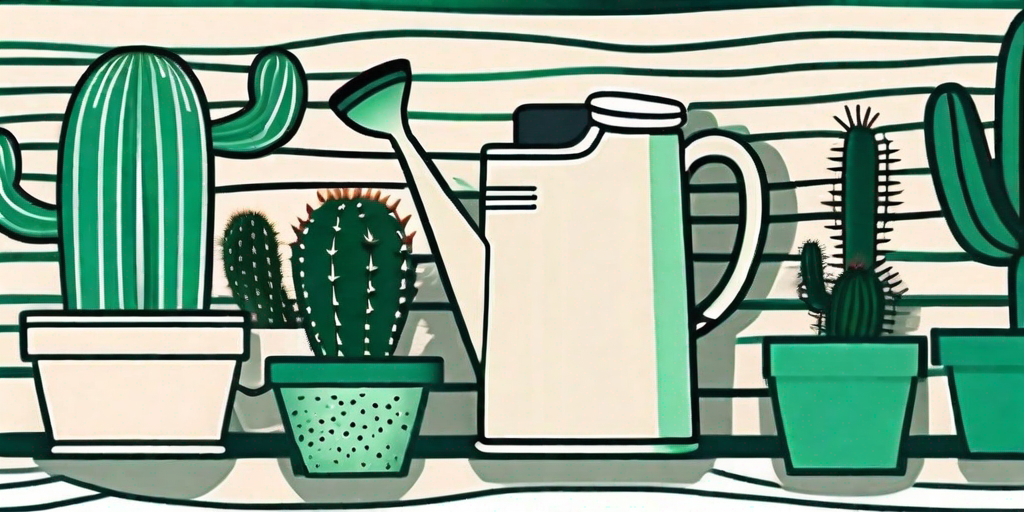
Welcome, cacti enthusiasts and green-thumbed adventurers! If you've ever looked at a cactus and thought, "How does that spiky little devil thrive in such harsh conditions?" then you're in the right place. Today, we're going to delve into the gritty world of cactus soil and discover how you can cultivate your own desert oasis, right in your living room. So, roll up your sleeves, don your gardening gloves (those spikes are no joke), and let's get our hands dirty!
The Importance of the Right Soil
Before we dive into the nitty-gritty, let's take a moment to appreciate the humble soil. It's not just dirt, folks. Soil is the lifeblood of any plant, providing essential nutrients, water, and stability. For cacti, the soil is even more critical as it needs to mimic their natural, arid habitats.
Using the wrong soil can lead to a host of problems, from root rot to nutrient deficiency. It's like trying to grow a palm tree in the Arctic - it just won't work. So, if you want your cactus to thrive, not just survive, you need to get the soil right.
What Makes Cactus Soil Different?
Good question, my budding botanist! Cactus soil is different from your average potting soil because it's designed to drain quickly and prevent water from lingering too long around the cactus' roots. Remember, these plants are desert dwellers. They're used to dry, rocky conditions, not soggy marshlands.
Typically, cactus soil is less organic and more mineral-based. It often contains coarse sand, perlite, or pumice to improve drainage and mimic the cactus' natural habitat. So, if your soil looks more like beach sand than rich, dark earth, don't panic - you're on the right track.
Creating Your Own Cactus Soil
Now that we've covered the basics, let's move on to the fun part - making your own cactus soil. Not only is this a cost-effective solution, but it also allows you to tailor the soil to your specific cactus species. Plus, who doesn't love a bit of DIY?
Before we start, remember: cacti are tough, but they're not invincible. They need the right balance of nutrients, water, and air to thrive. Too much of one can be just as detrimental as too little. So, follow these steps carefully, and your cactus will thank you.
Step-by-Step Guide to Making Cactus Soil
-
Gather your materials. You'll need coarse sand, perlite or pumice, and compost or potting soil.
-
Mix one part sand, one part perlite or pumice, and one part compost or potting soil in a large bucket. Stir until well combined.
-
Test the soil's drainage by watering it. The water should drain quickly, leaving the soil damp but not soggy.
-
Adjust the mixture as needed. If the water drains too quickly, add more compost. If it drains too slowly, add more sand or perlite.
-
Once you're happy with the drainage, your soil is ready to use! Simply fill your pot with the soil, plant your cactus, and watch it thrive.
Caring for Your Cactus
So, you've got your soil sorted, and your cactus is happily settling into its new home. What now? Well, my friend, now comes the ongoing care and maintenance. Don't worry, though - cacti are low-maintenance plants, so they won't take up too much of your time.
Firstly, remember that cacti are sun-lovers. They need plenty of light to grow, so place them in a sunny spot. However, be careful not to scorch them - too much direct sunlight can cause sunburn (yes, plants can get sunburnt too!).
Watering Your Cactus
When it comes to watering, less is more. Cacti are drought-tolerant plants, so they don't need much water. In fact, overwatering is one of the most common causes of cactus death (a tragic end, indeed).
A good rule of thumb is to water your cactus once a week in summer and once a month in winter. However, this can vary depending on the species and the climate, so do your research and adjust as necessary.
FAQs
Can I use regular potting soil for my cactus?
While you can use regular potting soil, it's not recommended. Regular soil retains more water and can lead to root rot. It's best to use a specially formulated cactus soil or make your own.
How often should I repot my cactus?
Generally, cacti should be repotted every 2-4 years. However, this can vary depending on the species and the size of the pot. If your cactus seems unhappy or its growth has stalled, it might be time for a new pot.
What should I do if my cactus is turning yellow or brown?
If your cactus is changing color, it could be a sign of stress. This could be due to overwatering, too much sunlight, or a nutrient deficiency. Check your care routine and make sure you're not overdoing it on the water or sun.
Conclusion
And there you have it, folks - the secret to growing healthy cacti with the right soil. Remember, the key is to mimic their natural habitat as closely as possible. So, get your hands dirty, experiment with different soil mixtures, and don't be afraid to make mistakes. After all, gardening is all about learning and growing (pun intended).
So, go forth and cultivate your desert oasis. And remember - if you can grow a cactus, you can grow anything. Happy gardening!















